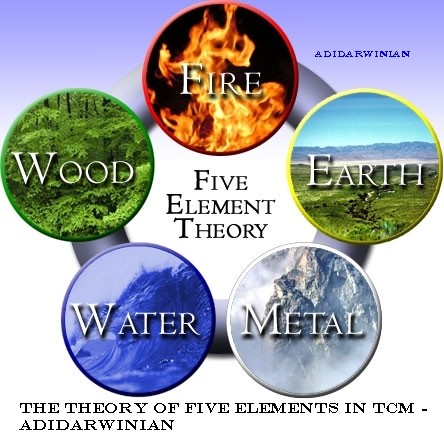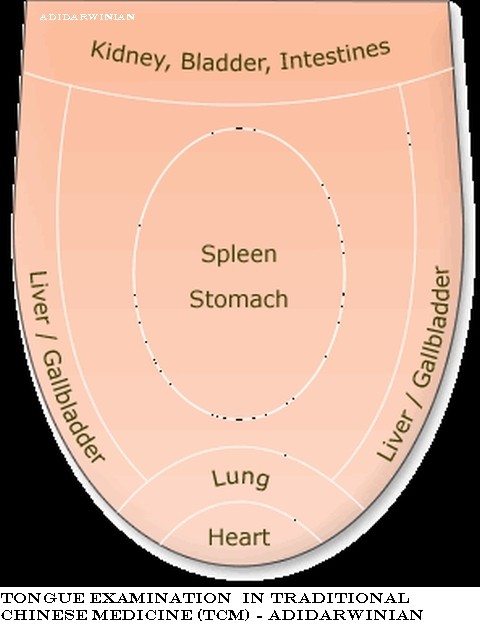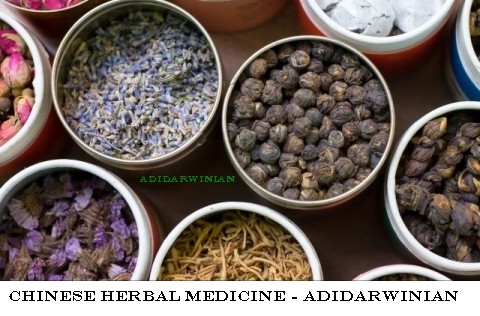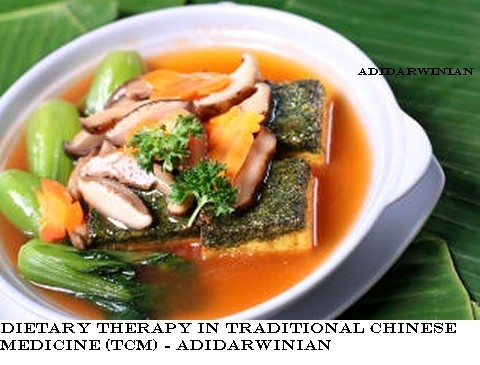The Basis of Traditional Chinese Medicine (TCM)
Traditional Chinese Medicine (TCM) stands up on the platform laid down by Taoism. Taoism, also known as Daoism, incorporates both a religion and a philosophy. Its deep roots extend back into the ancient Shamanism which existed in China since the Ice Age. Shamanism denotes a religion which involves weird practices, such as, influencing the world of good and evil spirits, entering a trance state by performing a ritual, divination, and healing. The cardinal principles that laconically explain the essential tenets of Taoism revolve around one’s conforming to moral and ethical principles, achieving union or harmony with nature, self-development, and the attainment of spiritual immortality. Tao literally means path, way, right way (of life), reason. Tao is a universal principle that forms the foundation of everything from the creation of galaxies to the behavior and interaction of human beings. The coverage of Tao is very wide, spanning even beyond the human logic. Tao can be comprehended only when both the reasoning and intuition are applied.
Qi, Yin and Yang, and Disease
Yin and Yang form one of the most fundamental concepts in the realm of Traditional Chinese Medicine. Yin and Yang are opposite forces and yet cannot exist without each other. Yin is regarded as the feminine, passive, or negative and Yang is regarded as the masculine, active, or positive principle. In our bodies, the life force or the vital energy, known as Qi, circulates and regulates our physical, mental, emotional, and spiritual health. The two opposite forces, Yin and Yang, influence the vital energy or the life force, that is, Qi. The vital energy, Qi, circulates in our bodies through a system of pathways or channels known as the meridians. Balanced and harmonious flow of Qi keeps us in health whereas an imbalance or blockage in the flow of Qi results in disease or illness.
The Theory of Five Elements in The Traditional Chinese Medicine
In the Traditional Chinese Medicine, another theory, the theory of five elements, also known as the five-phase theory, is acknowledged. The theory of five elements holds that the five natural elements: fire, earth, metal, water, and wood govern everything in the universe, including our health. This theory emphasizes the entwinement between the human beings and the nature.
 According to the Traditional Chinese Medicine’s five element theory, each of the five elements is associated with particular organs, seasons, senses, tastes, sounds, tissues, directions, colors, stages/changes, etc. The wood element is associated with the liver and gall bladder (organs), spring (season), eyes (senses), sour (taste), shouting (sound), tendons/sinews (tissues), east (direction), green (color), germinate/birth (stages/changes), etc. The fire element is associated with the heart and small intestines (organs), summer (season), etc. The metal element is associated with the lungs and large intestine (organs), autumn (season), etc. The earth element corresponds to the stomach and spleen whereas the water element is associated with kidneys and bladder (organs), winter (season), etc.
According to the Traditional Chinese Medicine’s five element theory, each of the five elements is associated with particular organs, seasons, senses, tastes, sounds, tissues, directions, colors, stages/changes, etc. The wood element is associated with the liver and gall bladder (organs), spring (season), eyes (senses), sour (taste), shouting (sound), tendons/sinews (tissues), east (direction), green (color), germinate/birth (stages/changes), etc. The fire element is associated with the heart and small intestines (organs), summer (season), etc. The metal element is associated with the lungs and large intestine (organs), autumn (season), etc. The earth element corresponds to the stomach and spleen whereas the water element is associated with kidneys and bladder (organs), winter (season), etc.
The Eight Guiding Principles in The Traditional Chinese Medicine
In order to analyze symptoms and differentiate conditions, the Traditional Chinese Medicine, uses eight principles. The eight guiding principles form a very important aspect of Chinese Medicine, as it helps deciphering the nature and the location of the imbalance in the body. The eight guiding principles comprises of four opposites: yin/yang, excess/deficiency, cold/heat, and interior/exterior.
Yin/Yang – A disease can be categorized in terms of the dominance of either yin or yang. In accordance with the theory of the Traditional Chinese Medicine, human beings have both the yin and yang qualities, and it is the perfect balance of these two qualities that is vital for maintaining good health. Yin is said to represent the solid organs, and is associated with cold and female energy. Yang is said to represent the hollow organs, and is associated with hot and male energy. Yin represents a chronic illness whereas yang represents an acute illness.
Excess/Deficiency – This principle helps determining the strength of a disease or illness. An excess condition signifies the excess of blood, energy (Qi), etc. In Traditional Chinese Medicine, an acute condition is regarded as an excess condition. A deficient condition denotes a lack of energy (Qi), heat, blood (anemia), or fluids. A chronic illness is categorized under this condition.
Cold/Heat – This principle of Traditional Chinese Medicine helps determining the overall energy of the patient. Chills, slow metabolism, pale skin, low-grade fever, etc., point towards a cold condition. Feeling heat in the body, increased metabolism, flushed skin, high fever, etc., point towards a hot condition.
Interior/Exterior – This guiding principle the Traditional Chinese Medicine elucidates symptoms in terms of the location of the disease. Exterior symptoms are the symptoms affecting the skin, hair, muscles, peripheral nerves, joints, and blood vessels. Exterior conditions result from the invasion of the body by the disease causing organisms and are usually acute. Exterior conditions are superficially located and have a short duration. Interior symptoms are the symptoms affecting the deep vessels and nerves, organs, bones, brain, and spinal cord. Interior conditions are the outcome of the disease causing organisms or pathogens entry into the interior of the patient’s body.
Diagnosis in Traditional Chinese Medicine
The diagnosis in TCM consists of the following main steps –
Observation/Looking at the Patient – The practitioner keenly looks at a patient in order to determine the overall state of disease or imbalance. Different types of body shapes and constitutions point towards different elements of the five elements theory. For example, small hands, pointed chin and head, along with curly hairs or a small amount of hair represent fire element whereas thin and tall body shape represent wood element.
Extensive Interview – The practitioner of Traditional Chinese Medicine asks questions about the symptoms, origin of the current problem, patient’s medical history, eating habits and diet, emotional issues both current and past, partner relationships, family relationships, work issues, stress, living conditions, environmental conditions, dreams, quality of sleep, etc.
Listening and Smelling – The Traditional Chinese Medicine’s practitioner checks how the patient’s voice sounds, for example, a loud and coarser voice represents an excess pattern, a low and weak voice reveals a deficient pattern, talking incessantly indicates a heat pattern, muteness represents a cold pattern, etc. An acute onset of hoarseness in voice points towards exterior pathogenic wind, especially, if there is soreness and redness of throat. A chronic hoarse voice represents an interior disease such as that caused by deficiency in Lungs’ Qi or Yin.
The secretions and excretions having foul odor are attributed to heat and excess type patterns whereas the secretions and excretions having little odor represent cold and deficiency type patterns. Belching with a sour or foul odor shows retention of food whereas urgent diarrhea with foul smelling stools represents damp heat in the patient’s large intestine. Foul smelling breath indicates heat in stomach.
Pulse Diagnosis – Although in the Modern medicine the pulse has a minor diagnostic role to play, it is of prime value in the Chinese medicine. Pulse diagnosis offers valuable information on the state of a patient’s blood, Qi, Yin, Yang, individual organs, and the constitution. In TCM, the practitioner observes six pulses in each wrist of his/her patient – three superficial pulses and three deep pulses at specific points along the patient’s radial artery. Practitioners describe pulse in terms of frequency, volume, and rhythm. They categorize a pulse as floating, slippery, or thready type.
Tongue Examination – In the Chinese medicine, the tongue is believed to be a vital measure of human health. The tongue has crucial relationships and connections to the meridians and the internal organs. The tongue has an exclusive relationship with a person’s heart as the heart opens to the tongue. Tongue is said to flowers into the heart or tongue is regarded to be an offshoot of a person’s heart.
 In the Traditional Chinese Medicine or TCM, a pinkish or light red tongue with a thin white coating is considered normal. Texture, color, size, shape, and coating of the tongue very much assist in diagnosis. A white tongue represents deficiency of energy (Qi), moisture, or blood whereas a very red tongue represents a fever or an inflammation. A very red tongue shows too much internal heat or dampness condition. Each part of the tongue, in this traditional system of medicine, is said to correspond to the state of an organ. For an instance, the heart and lungs are represented by the tip of a person’s tongue.
In the Traditional Chinese Medicine or TCM, a pinkish or light red tongue with a thin white coating is considered normal. Texture, color, size, shape, and coating of the tongue very much assist in diagnosis. A white tongue represents deficiency of energy (Qi), moisture, or blood whereas a very red tongue represents a fever or an inflammation. A very red tongue shows too much internal heat or dampness condition. Each part of the tongue, in this traditional system of medicine, is said to correspond to the state of an organ. For an instance, the heart and lungs are represented by the tip of a person’s tongue.
All the above mentioned diagnostic techniques provide comprehensive information about the state of a patient to the practitioner of this traditional system of medicine.
Therapies Used in Traditional Chinese Medicine (TCM)
Acupuncture – Acupuncture is a healing method which involves insertion of needles into the patient’s skin at specific points in order to normalize the flow of energy (Qi).

Chinese Herbal Medicine – Chinese herbal medicine involves the use of herbal remedies to treat energy imbalances and diseases. The remedies used in Chinese medicine are derived not only from plants, but also from the animals, and also include mineral substances. The international trade in seahorses for their use in Traditional Chinese Medicine (TCM) is leading to rapid decline in the population of these biological marvels. Seahorses are the only animals (seahorses are actually fishes) in the entire animal kingdom having pregnancy in males (see this interesting paper – Seahorse – Male Endurance – Roles Swapped!!). The remedies are combined in formulas and are prescribed as teas, capsules, pills, tinctures, and powders.

Moxibustion – Moxibustion involves the burning of a small herb called mugwort on or near the skin. Moxibustion helps stimulate the flow of energy (Qi), strengthen the blood, and maintain general health.
Chinese Massage Therapy – Massage therapy of Traditional Chinese Medicine is described as Tuina or Tui Na, which literally means “push and pull”. Tuina or Chinese massage therapy works with the energy system of a person’s body and helps bringing the body back into the balanced state. As this therapy is based on the same meridian points as used in the acupuncture, it is often described as “acupuncture without needles” or “needleless acupuncture” or “acupressure”.
Qigong – Qigong means the skill (gong) of attracting energy (Qi). Qigong is a kind of exercise therapy that optimizes the flow of Qi in the body. Qigong is comprised of postures, movements/exercises, breathing techniques, and meditation techniques. It purifies the Qi and increases sense of well-being.
Tai Chi – Tai Chi or Tai Chi Chuan (Supreme Ultimate Boxing) is actually an ancient Chinese martial art for self-defence. It consists of breathing techniques, meditation techniques, and body movements, and is practiced in slow motion. Tai Chi helps in reducing stress, provides relaxation, and promotes health.
Cupping – In cupping therapy of Traditional Chinese Medicine, a glass cup is warmed by burning a flammable substance or a cotton ball inside the cup; this removes all the oxygen and creates a vacuum. The cup is turned upside-down and placed over a specific area on skin. The vacuum helps in anchoring the cup to the skin and pulls the skin upwards on the inside of the glass. Drawing up of the patient’s skin helps opening the skin’s pores. This stimulates the flow of blood, harmonizes the flow of energy (Qi), removes obstructions, and helps in the elimination of toxins.
Dietary Therapy – According to the Traditional Chinese Medicine, a person’s diet helps in maintaining a perfect balance of vital energy (Qi), and thus, contributes to good health. Diet is believed to be one of the three sources of Qi, the other two being – heredity and environment. Therefore, in the Traditional Chinese Medicine, a person’s diet plays an important role in causing diseases. The Chinese diet is based on the fundamentals laid down by the theory of five elements and the theory of eight guiding principles.
 Food articles are said to possess Yin and Yang properties. Food articles are also described as warming, cooling, moistening, and drying types. Food is selected according to a patient’s particular needs and constitution, for example, a person suffering from a hot-dry condition is advised not to eat food articles that are broiled, fried, spicy, or contain high fat.
Food articles are said to possess Yin and Yang properties. Food articles are also described as warming, cooling, moistening, and drying types. Food is selected according to a patient’s particular needs and constitution, for example, a person suffering from a hot-dry condition is advised not to eat food articles that are broiled, fried, spicy, or contain high fat.





